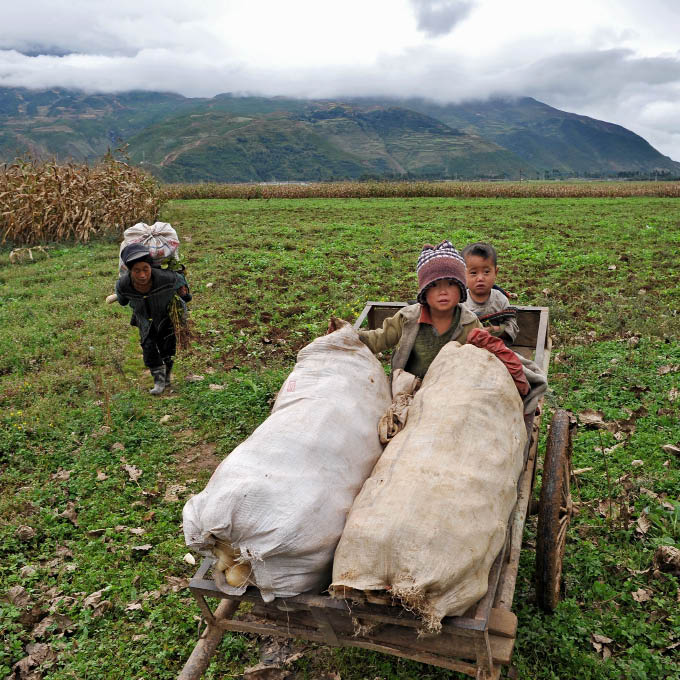Goodbye, Poverty
By staff reporter HOU RUILI
We will spare no effort to free our fellow men, women and children from the abject and dehumanizing conditions of extreme poverty . . . We resolve further to halve, by the year 2015, the proportion of the world’s people whose income is less than one dollar a day.
– United Nations Millennium Declaration (2000)
 |
| Two brothers wait for their parents, who are busy tending the family’s maize field, Butuo County, Liangshan Yi Autonomous Prefecture, Sichuan Province. |
TWELVE years have passed since the UN laid out its ambitious goal to halve the number of people living in poverty. And with less than two years left until the results are in, it looks like the world can congratulate itself early: poverty is on the back foot worldwide.
Eradicating poverty is a global challenge that requires global commitment, but the anticipated fulfillment of the U.N.’s Millennium Declaration owes itself in large part to the successes of one country. As CNN wrote last June: “650 million escape extreme poverty. Thanks China!”
The World Bank reports that China has lifted more than 600 million people out of poverty since it initiated market reforms in 1978.
Statistics from the United Nations Department of Economic and Social Affairs show that over the past two decades China has accounted for 70 percent of the decline in world poverty. “Thanks China,” then, seems pretty spot on.
Poor No More
There are a number of measures of poverty alleviation. Over the last 30 years, China attached greater importance to those living in “extreme poverty,” defined as the severe lack of material possessions or money. The World Bank sets the extreme poverty line at US $1.25 a day.
According to the Chinese government’s own measurements, which approximate to the World Bank’s definition of extreme poverty, there were 250 million people living in poverty in China in 1978, accounting for 30.7 percent of the total rural population.
Since 1978 the poor in China have benefited from land reforms in which the essential unit of land management has transformed from the commune to the individual household. This shift has resulted in dramatically higher crop yields and more money in the pockets of farmers.

